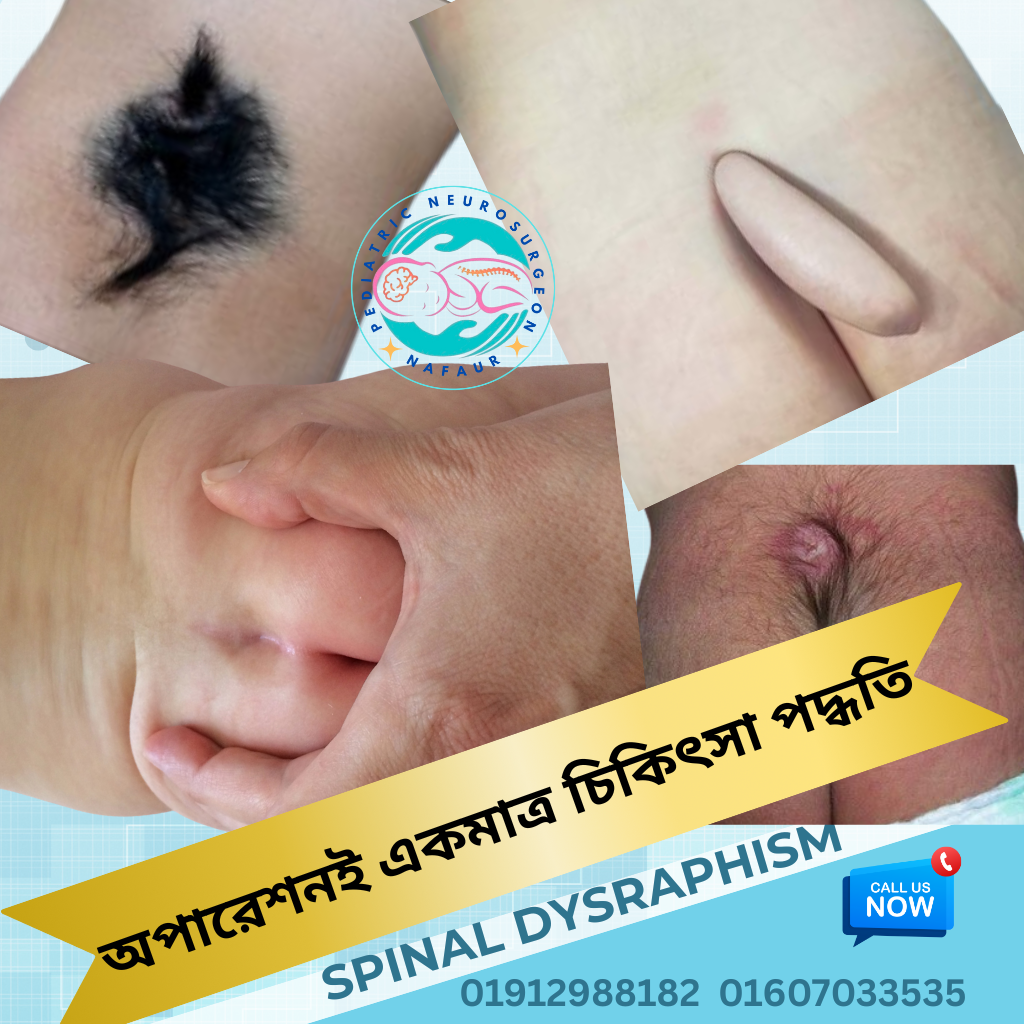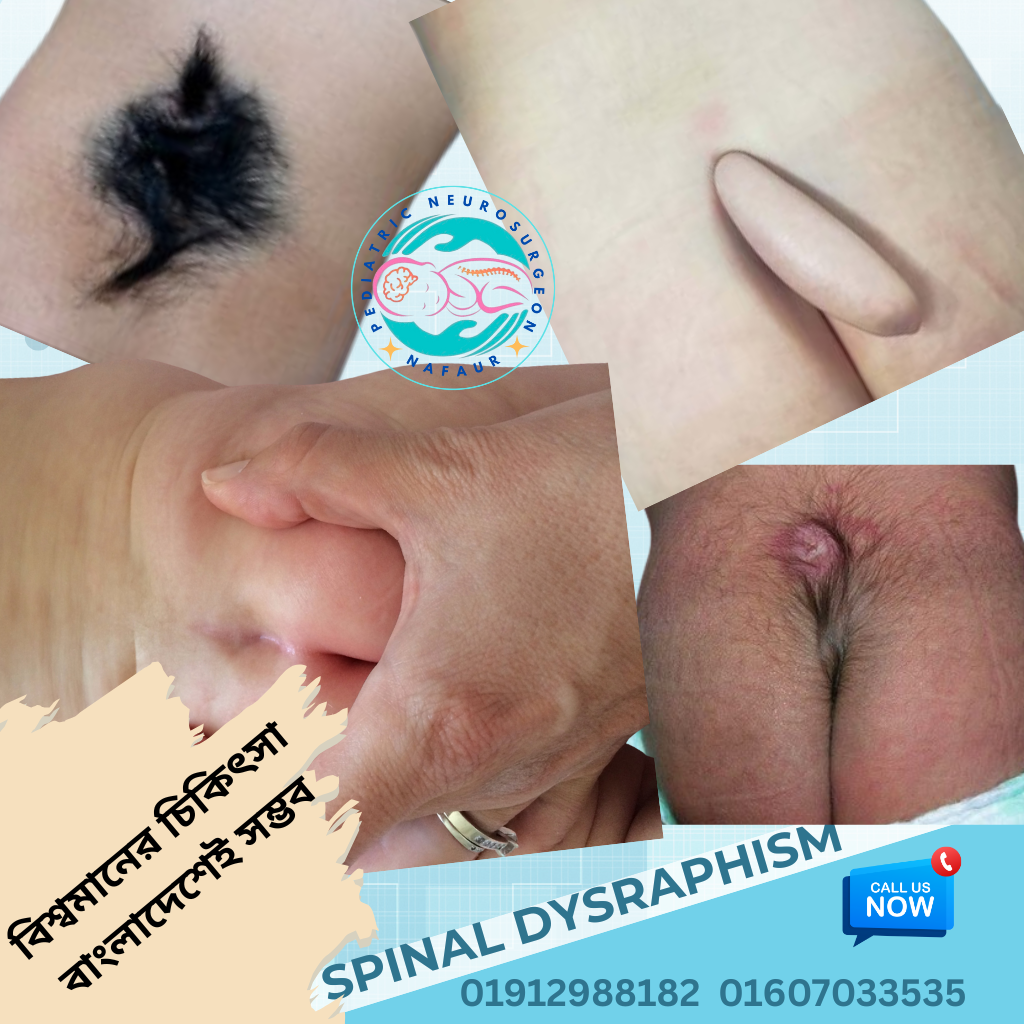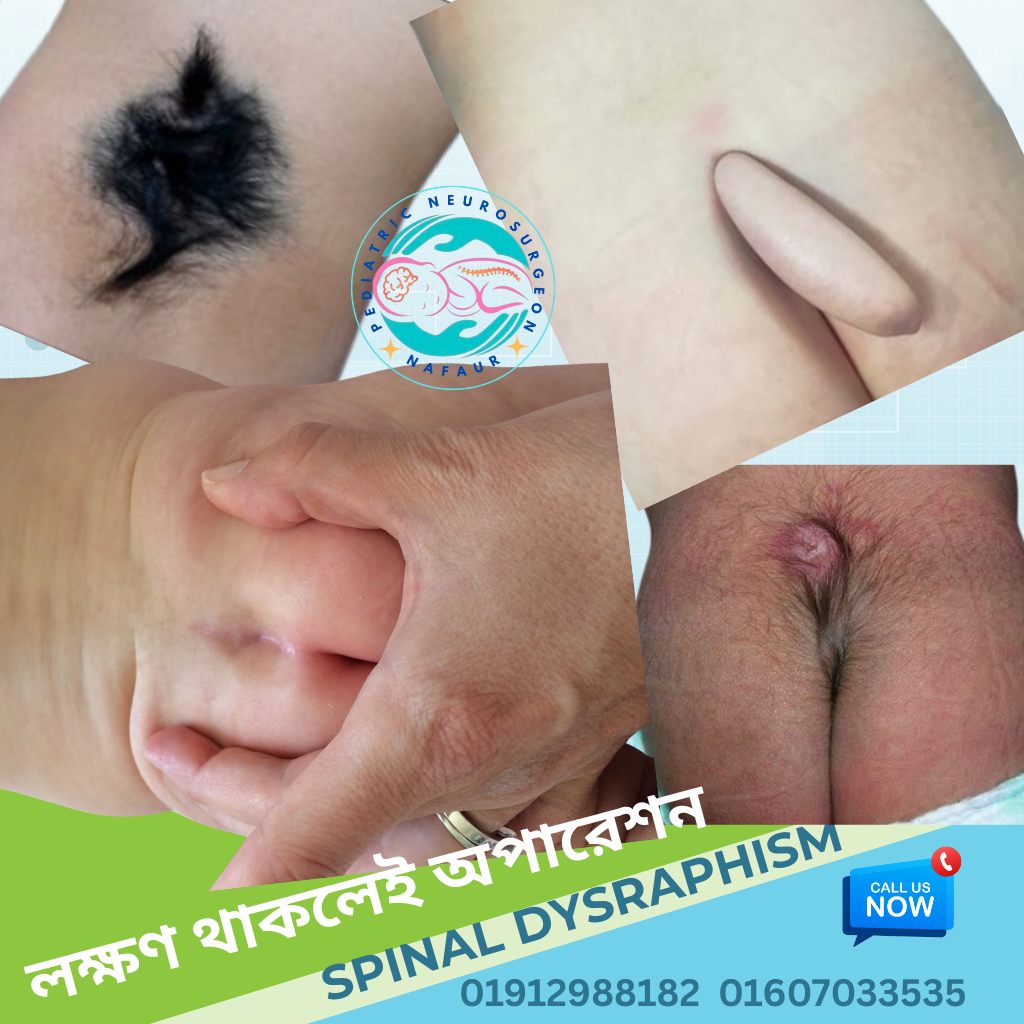Occult Spinal Dysraphism
Occult Spinal Dysraphism
Occult Spinal Dysraphism (OSD) refers to a group of hidden spinal cord malformations present from birth, where the spinal cord is improperly formed or positioned but covered by skin, making the condition invisible to the naked eye. These defects often go undetected for years and can lead to progressive neurological deterioration if not diagnosed early.
In Bangladesh, due to a lack of early spinal screening in newborns and limited awareness among parents and general physicians, children with occult spinal dysraphism often present late—after symptoms such as leg weakness, gait abnormalities, or bladder dysfunction have developed.
🧬 Types of Occult Spinal Dysraphism
Occult spinal dysraphism includes a wide range of conditions:
1.Tethered cord syndrome
2.Lipomyelomeningocele
3.Split cord malformation (diastematomyelia)
4.Dorsal dermal sinus
5.Thickened filum terminale
6.Fatty filum
7.Meningocele manqué
These conditions may exist alone or in combination, and require detailed neurosurgical evaluation for proper management.
🔍 Common Skin Signs and Symptoms
Though the spinal abnormality is hidden, cutaneous markers on the back (especially the lumbosacral region) can be warning signs:
Midline dimple or pit
Tuft of hair or localized hair growth
Fatty lump or swelling
Skin tag or hemangioma
Skin discoloration or nevus
If any of these are noticed in infants or children in Bangladesh, especially in rural or low-resource settings, prompt referral to a pediatric neurosurgeon is essential.
⚠️ Neurological Symptoms (Often Delayed)
Over time, as the child grows, spinal cord tension increases, leading to:
Lower limb weakness or deformities
Foot abnormalities (clubfoot, toe walking, flat feet)
Gait disturbance or falls
Back pain, especially in adolescence
Loss of bladder or bowel control
Scoliosis or spinal curvature
Unfortunately, many of these children in Bangladesh are mistakenly referred to orthopedic clinics, urologists, or even psychiatrists before the correct diagnosis is made.
🧪 Diagnostic Investigations
Proper imaging and clinical evaluation are crucial:
MRI spine – gold standard for diagnosing OSD and identifying associated anomalies
Ultrasound (in neonates <6 months) – useful initial tool if MRI is unavailable
Urodynamic study – essential to assess bladder dysfunction
X-rays – to detect skeletal abnormalities or scoliosis
At NINS and Bangladesh Paediatric Neurocare Centre, Dr. Nafaur provides access to high-resolution spinal MRI, interpreted with the support of expert pediatric radiologists.
🛠️ Surgical Management of Occult Spinal Dysraphism
If symptomatic or high-risk features are identified, surgical intervention is recommended to prevent irreversible neurological damage.
🔧 Common Surgical Approaches:
Detethering surgery – to release the spinal cord from abnormal attachments
Excision of lipomas, dermal sinuses, or septa
Repair of dural defects
Microsurgical decompression using high magnification and intraoperative neuromonitoring (IONM)
“The goal of surgery is to halt progression of symptoms, prevent disability, and improve quality of life. In Bangladesh, early intervention makes a world of difference.” — Dr. Md. Nafaur Rahman
🏥 Postoperative Care and Long-Term Monitoring
After surgery, comprehensive care is critical:
Regular wound checks and infection prevention
MRI follow-ups to monitor for retethering
Urological evaluations for bladder function
Physical therapy for motor recovery
Psychological support for children and parents
Dr. Nafaur’s centers in Dhaka provide multidisciplinary follow-up, especially important for rural patients who may have limited access to long-term care.
🌟 Prognosis and Outcomes
With timely surgery and rehabilitation:
Many children regain or preserve walking ability
Bladder control improves or stabilizes
Spinal growth and alignment are protected
Overall quality of life and independence are enhanced
However, delay in diagnosis may lead to permanent damage, especially in rural Bangladesh where healthcare literacy is limited.

Common Occult Spinal Dysraphism















